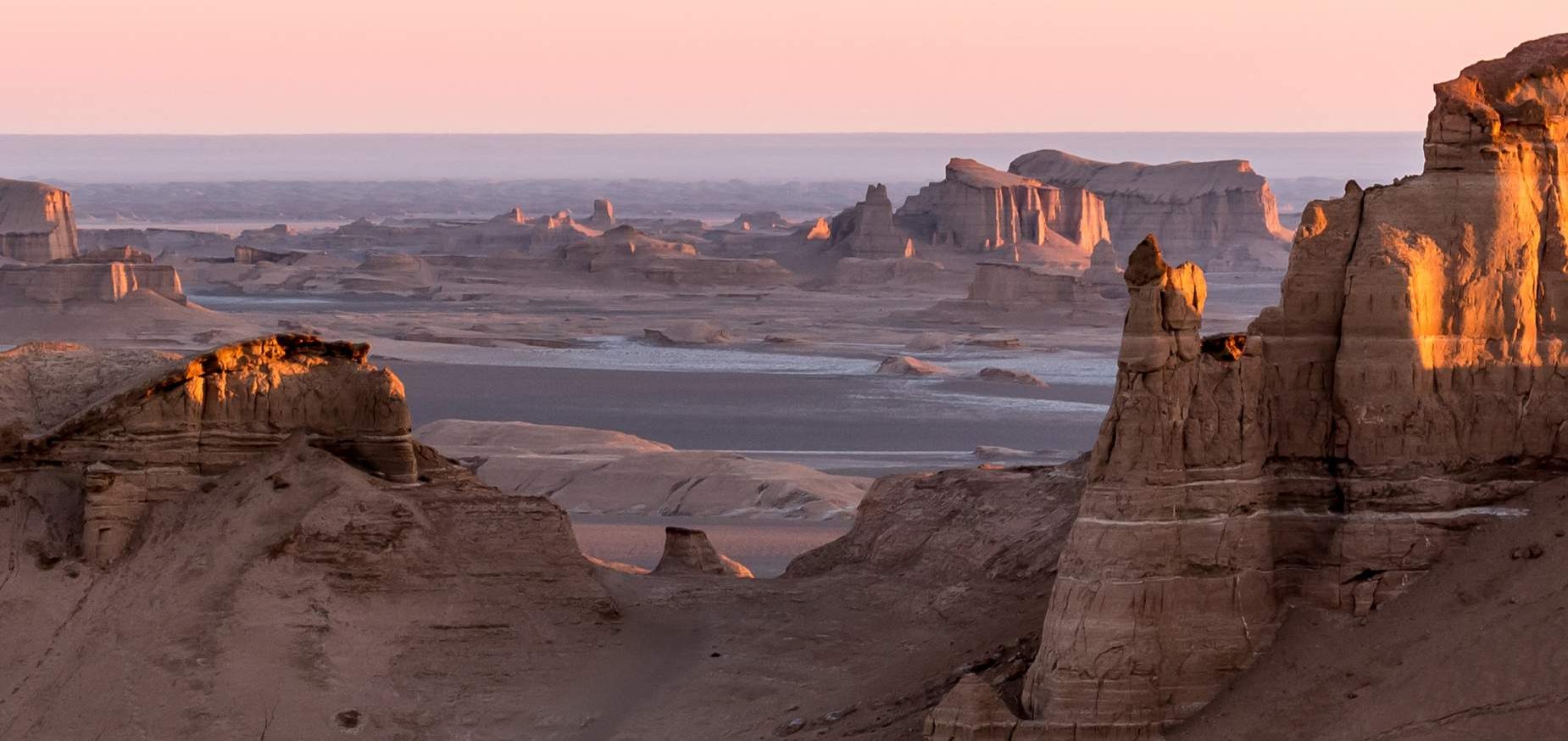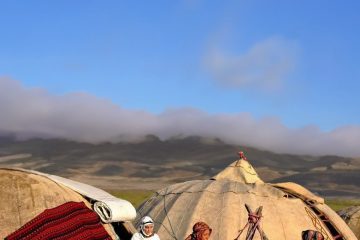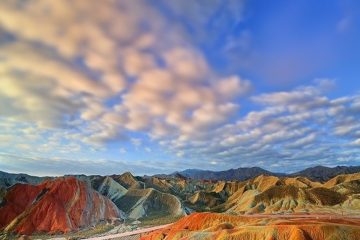Discovering the Iranian Plateau
11 days/ 10 nights
“Discovering the Iranian Plateau” is the fourth itinerary of the “Calm and Cultural” category that synthesizes two objectives in the same trip. By defining this style, we thought of attending to different needs and cultural tastes. In fact, each itinerary has its own characteristics, making the local culture alive with a particular strategy, created for the lovers of typical landscapes and wonderful cities of Iran. The highlight of this trip is to focus on the coalition between fairytale cities and picturesque landscapes. It offers travelers the opportunity to reflect during the tour and overnight stay in the most splendid cities of Iran.
Duration of trips is usually limited. Sometimes, there is no time for us to sit in a corner of the bazaar to have a coffee and contemplate the urban bustle, to stay in our room and rest, to stroll through popular neighborhoods or upper class areas, and to stand on the dunes of a desert or to stop in front of picturesque mountains to take a deep breath and take pictures. Many times it has happened to us that we had to refuse these whims and leave. The Calm and Cultural style is created precisely to meet these types of needs, although they may seem trivial, but they are precious for their influence on our memories of the trip. In proposing the theme “Calm and Cultural”, we have tried to give as much time as possible to observe the world around us without having the urge to leave or worrying about time. We thought of creating a less intensive and more relaxing itinerary so that we could walk slowly and contemplate the details of faces, cities and landscapes. In fact, having more time available, we can decide what time to get out of the room.
This category gives us the possibility of choosing both the type and duration of the trip. All you have to do is to decide on the dates and let us know the reason for your trip: relaxation, wedding, wedding anniversary, birthday celebration, engagement, etc. In addition getting to know the most beautiful and fascinating places, our photographer will accompany you in order to photograph unforgettable moments throughout the trip.
What distinguishes this trip to Iran from others is the desire to return immediately to this country. The most striking point of the trip to Iran is undoubtedly the friendliness and hospitality of Iranian people who leave unforgettable memories deep down in the heart of travelers.
| DEPARTURE/RETURN LOCATION | IKA International Airport | ||||
| DEPARTURE TIME | Please arrive at least 2 hours before the flight. | ||||
| INCLUDED |
| ||||
| NOT INCLUDED |
|
1° Day; Country of origin - Tehran
Departure by scheduled flight to the capital of Iran, Tehran, located at the foot of Mount Alborz. Welcome and greetings by SITO TRAVEL’s tour guide at the airport. Transfer to hotel and check-in.
Azadi Hotel or similar hotels.
2° Day; Tehran
Breakfast. The day is dedicated to visit particular places of the Iranian megalopolis. Before we start, it is necessary to know that the Iranian Revolution (1979) is no the beginning of Iran’s history, but rather a milestone. The birth of modern Iran dates back to 1925, when Reza Pahlavi ascended the throne and the Qajar dynasty was deposed. During his ascension to the throne, Reza Shah had the support of the Shiite clergy, but once he came to power, he abandoned his alliance with the clergy and developed various campaigns to modernize and secularize the country. Thanks to oil revenues, the Shah was able to establish a new state based mainly on two pillars: the army and the bureaucracy.
In the morning, we head to the north of the city, a very interesting area to observe the architectural progress of modern Tehran. We will have the opportunity to visit the Niavaran Palace which, in the 60s, hosted the most important politicians of the world. After a lunch break in a typical restaurant in the middle-class district of Tehran, we continue to the lively Tajrish Bazaar and then return to the hotel walking along the beautiful tree-lined Valiasr Street.
- Niavaran Palace: has witnessed many of the events recounted in historical texts including the attempt to modernize ancient Persia, which ended dramatically, due to many fatal mistakes of the Shah. The palace was the last Mohammad Reza Pahlavi’s refuge before he fled the country. Walking through the corridors and rooms of the residence, we will discover the clothes and objects left by the Shah and his family before leaving Iran. This palace represents, briefly, a collection of historical objects telling us a fragment of the modern history of Iran before the Islamic Revolution. Among the exhibits are the pilot certificates of Mohammad Reza Shah’s son, the gifts given to the Shah’s sons, the moon fragment that Nixon gave to the Shah during an official visit, a painting of the queen, Farah Diba, smiling as she watches her son, Reza, in a pilot’s uniform, climbing a tree.
Today, Tehran play a pivotal role in Iran’s modern history as it offers travelers extraordinary sites, bars, parks and recreational areas. Iran’s concern of artistic developments, recent architectural interventions and the revival of many traditional style cafes has made the city a fascinating labyrinth that holds a surprise for visitors at every corner.
- In the afternoon, a pleasant walk across the Tabiat Bridge (Pol-e Tabiat), a modern landmark of the Iranian capital, Tehran. Tabiat Bridge is a pedestrian area, built on one of the main highways of the city connecting two green hills (two public parks). The bridge was designed by a 26-year-old Iranian woman, “Leila Araghian”. Since its inauguration in 2014, it has won many international awards. The designer has expressed that this work has been conducted with the purpose of bringing people together.
Later, we go to one of the cafes frequented by young artists, writers and inhabitants of the megalopolis on another side of the city.
- Niavaran Palace
- Lunch in a typical restaurant in Niavaran
- Tabiat Bridge
- Tehroon Café
3° Day; Tehran - Kerman - Shahdad
In the morning, transfer to Mehrabad Airport to catch the domestic flight Tehran-Kerman. Arrival in Kerman. Transfer to hotel and check-in. Later, we will visit one of the most fascinating squares of the 17th century.
Due to Kerman’s strategic position, this city enjoys a great history. Kerman, located in the southeast of the country, opens the way to India and Pakistan and from the south leads to Bandar Abbas and the Persian Gulf. In fact, Kerman was one of the satrapies of the Persian Empire which provided access to the cities of Babylon, Susa and Persepolis. During various dynasties, the importance of this city was never diminished even in the Sassanid (3rd century A.D.) and Safavid (16th-18th centuries) eras. Kerman offers a fascinating bazaar to all lovers of popular places where they meet different ethnicities and races.
Despite intercultural exchange between Kerman and neighboring countries such as Pakistan and Afghanistan, the anthropological hallmark of the region is undoubtedly a group of Iranian tribes, Baluchi. The Baluchis are an ancient and authentic Iranian ethnic group who have preserved their customs since ancient times. They settled in Iran in the 12th century and in the Mongol period their territory became known under the name “Baluchistan”.
In the historical Ganjali Khan Square you can visit a magnificent complex that have remained from the Safavid era, considered as the only elements of Renaissance architecture. Kerman’s Ganjali Khan Square incorporates an elegant caravanserai and a wonderful hammam (Turkish bath).
- Ganjali Khan Complex: In almost every oriental country there is an ancient hammam to visit, but what distinguishes this bath from others is its majesty and breathtaking beauty. This thermal complex is divided into three different parts: frigidarium (the place to take cold baths), tepidarium (the room of warm baths) and caldarium (the room of hot bath). What highlights the beauty of this bathhouse is the decoration of the walls and the position of the pools in the first room. Each space was reserved exclusively for a particular social class: the descendants of the Prophet, clerics, nobles, merchants and farmers. In addition to the regular tiles, majolica tiles with bright instructions have also been used at all times.
- In the afternoon, we leave for Mahan. In the Prince’s Garden (Baq-e Shahzadeh), a unique model of Persian gardens where the cascading waterfalls make the Persian Garden a real paradise on earth in the heart of the monochromatic desert of Kerman.
After a walk through the cypress trees in the garden and splashing of streams, we set off for Shahdad, near the Lut desert.
- Domestic flight to Kerman
- Ganjali Khan Square
- Prince’s Garden
Transfer to Shahdad and overnight stay in a traditional house.
4° Day; Shahdad - Kalut - Rayen - Kerman
Departure to the Kaluts desert. In Shahdad, the last inhabited area on the edge of the Lut Desert, there is a very special Nebka, also known under the name Tamarix, which in the Lut Desert reaches a height unequaled by any other desert on the planet. In the east of the desert, there is a not very high plateau that is covered with a layer of salt, although the center of the desert is sculpted by the wind in a series of parallel ridges and hollows whose height reaches up to 70 meters. After visiting Shahdad, the journey continues to discover the Yardang, the ridges created by the erosion caused by wind, which lie shortly after the village. Yardang is known by the name “Kalut” in Persian, while it is etymologically derived from Turkish. The Kaluts are believed by the locals to be the work of jinns, supernatural creatures in pre-Islamic Arab world. Actually, they are formed by wind blowing in the same direction that has resulted in the erosion of the rocks over the millennia. Dasht-e-Lut is listed as a UNESCO World Heritage Site of Iranian Nature. During the short rainy season in spring, snow melt from the Kerman Mountains floods the area, although within a short time it dries up and leaves rocks, sand and salt behind.
- The journey continues to Rayen, a splendid citadel made of adobe, a typical example of ecological desert architecture in the Sassanid era in the 4th century AD. Rayen Citadel was divided into several places and quarters: dwellings reserved for the elites and ordinary people, bazaar, grain store, part of the bourgeoisie and royal castle. The citadel has 15 towers with a corridor that allowed the soldiers to move from one to another and the holes at the apex of the towers were used to monitor the citadel, from above, by archers every movement around the fence. Rayen is located approximately 2200 meters above sea level, so the desert landscape and the mountain behind the citadel offer a picturesque image to the visitor.
We return to Kerman and overnight stay at the hotel.
- Lut desert, excursion in off-road 4*4
- Kalut
5° Day; Kerman - Yazd
Landscapes and routes are part of the trip. The dominant colors of each site give a clue to the traveler about the locals. Passing through the pistachio fields in Kerman, we can see the farmers pampering the trees. Summer is the ideal time to walk among the treasures of the zone that produce one of the best agricultural products in the whole country. The pistachio tree can reach up to 5m with leaves composed of three leaflets, violets, dioecious flowers, gathered in panicles and yellowish or reddish fruits, similar to those of the olive tree, containing an aromatic and sweet seed. Etymologically, the term pistachio comes from the Latin pistacium borrowed from the Greek (Pistakion) that had come from the Persian (pesteh). Apart from its pleasant taste that it leaves in the mouth, it has defined a particular green color, pistachio green.
- On the way, we will stop to visit Zeinodin caravanserai, a circular caravanserai, unique in Iran, which always fascinates visitors. There is no other place in the world that provides such an extraordinary experience. To reach the beating heart of this magical place, you need to climb the stairs that lead to the roof of the caravanserai, from where you can admire the landscape of the high mountains before your eyes. Just look out over the plain and imagine the caravans crossing the deserts.
Arrival in Yazd and accommodation in the hotel. Later, we will visit the historic center and ancient district of Fahadan.
- Historic center and ancient district of Fahadan: Yazd owes its fame mainly to the architecture of the old town, entirely built of adobe. The most important monuments of the historic center, however, are the “wind catchers” (Badgir) perceptible from afar. For this reason, Yazd is also known as the “city of wind towers”. These towers, called Badgir, serve to provide the necessary ventilation since the houses do not have many windows to the outside. During the day, Badgirs remove hot air from the inside and, at night, conducts fresh air from outside into the building. The system takes advantage of two environmental conditions in the region: the difference in air pressure and temperature.
The atmosphere of the historic center is very fascinating and there we stop in one of the cafes to have a coffee, tea or ice cream typical of Yazd called Maghut or Paludeh. There are also cafes on the roofs of the houses which offer us a panoramic view of the entire district of Fahadan. It will be an unforgettable moment to contemplate the old city at sunset from one of the traditional bars of Fahadan.
After a walk in the fascinating labyrinth of Fahadan and a saffron tea, we walk in the narrow streets of Yazd to go to one of the typical places of the old city for dinner.
- Pistachio fields and lunch at the Zeinodin caravanserai
- Fahadan district
- Dinner at a typical Yazd restaurant
6° Day; Yazd - Meybod - Isfahan
After breakfast, we visit the town of Meybod with the characteristic hand-painted ceramic factories. In Meybod, we visit a caravanserai and a traditional icehouse.
- Meybod Icehouse (Yakhchal): it is a trullo-shaped construction mainly used for storing ice during the summer. Ice production took place during the winter in the basins outside the ice house and its conical shape protected the inner tank containing ice from the sun. The diameter of the tank, corresponding to the level of the entrance door, even reaches 13 meters and gradually decreases to 6 meters. Therefore, the internal height of the icehouse from the lowest part to the highest point of the dome was 21 meters.
The afternoon is dedicated to visit the square and walk through the old Chaharbagh Boulevard leading to Si-o-Se Pol (33 Arches Bridge).
Having walked across the ancient bridge, we will have dinner at a traditional restaurant in the historical center of Isfahan to taste typical Persian dishes.
- Meybod caravanserai and icehouse
- Chaharbagh Boulevard
- Si-o-Se Pol
Abbasi Hotel or similar hotels.
7° Day; Isfahan
The highlight of the itinerary is Isfahan. This city is a historical image that completes the journey in Iran. It is no coincidence that Isfahan attracted Pasolini’s attention to shoot some scenes of his film in Naqsh-e Jahan square. There is a Persian saying: “Isfahan is half of the world.” In fact, the flourishing of Islamic-Iranian architecture was born here in Naqsh-e Jahan Square where the turquoise blue dominates the domes of mosques and the sky above. Over time, the former polo field was converted into the home of valuable art workshops. The Safavid era corresponds to the third Persian Empire which restored Iran’s power and established a new country based on political, religious and military relations. The presence of Vank Cathedral (also called St. Savior’s Cathedral), run by the Armenian Christian community since 1605 AD makes a good example of this city. However, the Safavid power was represented through art and thus, a phase of “Renaissance” of Persian civilization, culture and art was born in Isfahan. The Islamic Renaissance period in Iran sees artistic lightning under the rule of the Shah Abbas I (1587-1629).
Visiting Isfahan:
- Royal Square or Naqsh-e Jahan: (the image of the world) located in the center of the city, was redesigned by Shah Abbas I. There are two arches in the large central square of Naqsh-e Jahan (512 by 163 meters). On the southern side, there are many handicraft stores selling miniatures, turquoise work, enamels and traditional fabrics. Naqsh-e Jahan Square was home to an elite of merchants who sought artistic refinement. In the square, there are still the pillars that served to delimit the Polo field built 400 years ago.
- Chehel Sotun Palace: (40 Columns Palace) is the pavilion where the king held ceremonies. A few steps from the square, another magnificent Persian Garden shines in the courtyard of this palace that embraces one of the delights of the Safavid Renaissance: the pavilion is still alive in the heart of the Persian Garden as if the luxury of real life had never ceased there. In this place, we will see the masterpiece of miniature art which, by admiring the paintings and the stories they tell, open a door of culture and anthropology to familiarize us with the most important characters in the history of the Middle East in the sixteenth and seventeenth centuries.
In Isfahan, in a matter of seconds, every traveler’s dream of Middle East comes true: Iran and the appeal of the Renaissance, Chehel Sotun Palace and the magnificent ceiling of the Music Palace of Ali Qapu Mansion. In Isfahan, as one visit ends, another begins, and the traveler unconsciously prepares to listen to the city’s narratives, as if Scheherazade were reading them directly from “the Arabian Nights”.
- Royal Square
- Chehel Sotun Palace
- Typical dinner at Naqsh-e Jahan Square
8° Day; Isfahan
- Passing through Isfahan means to be surprised and immersed in the local culture. To get from the Jolfa district to the Jameh Mosque of Isfahan, we have to cross the Zayandehrud which defines the border between the two religious quarters of Isfahan. Crossing the Armenian quarter and entering the very popular district of the Jameh Mosque is one of the most important visits as we can admire the progress of Iranian-Islamic architecture that occurred from the seventh century until 1900. Therefore, it is not wrong to point out that Isfahan Jameh Mosque is the oldest and most complete of its kind in the whole country. Here, details are infinite and spaces are immense. In the 14th century, an exemplary model of altar, called the Oljato mihrab, was born in this mosque. The building has a complex stucco composition consisting of three-dimensional inscriptions blended in floral and geometric carvings. The mosque has two clearly recognizable spaces, even for inexperienced people: the interior and the exterior. The admiration of the monochromatic bricks inside and the turquoise blue outside is unavoidable. The transition from one space to the other allows us to travel back in time, especially when we are under the magnificent Taj al-Moluk dome, considered to be the most beautiful brick dome of Iran.
Those who love to get lost in the alleys and spend time with the people, should know that it is time to enjoy walking among the stores with the scent of perfume and spices as there is a bazaar right at the main entrance of the mosque. After a 40-minute walk, you can reach Naqsh-e Jahan Square. Before following the covered corridors of the bazaar, one can satisfy his curiosity by visiting the synagogues of Isfahan’s Jewish community.
After the visits, we return to the hotel. In the afternoon, we go to the Armenian district of Jolfa. Iran’s multi-ethnicity is a relevant factor in understanding Iran today. While some of today’s nomads have been living in the Iranian plateau for centuries, other ethnic groups such as Turkmens or followers of other religions, such as Christians, came to Iran for geopolitical reasons and recognized Iran’s tolerance towards other ethnicities and religions. One need only think of the particular case of the Armenians who were forced to move to Iran on the orders of Shah Abbas I. In fact, the Armenians of Jolfa region of Armenia, in the 1920s, left their homeland, devastated due to ongoing conflicts between the Ottomans and the Safavids, and after arriving in Isfahan, the Armenian patriarchate began a new socio-religious phase by setting up new headquarters and communities. The Jolfa district of Isfahan welcomed the Armenians, and Shah Abbas I, in a manuscript signed by himself, allowed them to establish new commercial and religious relations, giving them a certain freedom, fully supported by the Safavid court. The Armenians opened an important trade route in the heart of Isfahan, the Safavid capital. The headquarters of the Armenian caliphate was centralized mainly through the publication of new religious texts using the Gutenberg invention in Iran. The beauty of the architecture and the details of the murals in Vank Cathedral surprise any traveler.
The afternoon is dedicated to take a walk in Jolfa district and have a coffee or Iranian tea and for dinner we go to the other side of Jolfa to relax and contemplate other places frequented by young people.
- Jameh Mosque of Isfahan
- Walking through the bazaar to Imam Square
- Stroll through the Jolfa district
- Dinner at a restaurant in the Armenian quarter
9° Day; Isfahan - Natanz - Abyaneh - Kashan
In the late morning, departure to Natanz and then we continue the journey along the Karkas (vulture) Mountains to join an incredible adventure, walking through one of the oldest traditional villages of Iran, Abyaneh, in a valley. This village, with an altitude of more than 2200 meters above sea level, dates back to the Achaemenid era of the 4th century BC. Abyaneh, characterized by the red ochre color of the houses, is surrounded by the ruins of the Sassanid dynasty belonging to the 3rd century A.D. Another characteristic of this village is the rose pattern on the long white scarves of the women. (Depending on the season and the weather this visit can be included or excluded).
After visiting Abyaneh, we leave for Kashan.
Kashan always represents an exemplary model to learn more about its local culture. In addition to the existence of its millenary hill, Kashan is also known for its 19th century villas, also called bioclimatic houses. It is necessary to know that Kashan has a desert climate and very hot summers. The invention of the city’s inhabitants led to the birth of a house in two or three different levels making easy to cool or heat the rooms depending on the season. The importance of the city is not only based on the variety of houses, but it is mainly known for the production of high quality rose water. In fact, the trip to Iran now takes on its original scent of rose petals grown in the hills of central Iran. This beautiful city, located in a green oasis, still houses some of the most beautiful traditional houses in the area. The stay in Kashan consists of spending a peaceful night in a fairytale place or in 19th century villa that has preserved the bioclimatic criteria adapted to receive guests. Just before leaving for the desert, we will visit the ancient Sultan Amir Ahmad Bathhouse, the Safavid period thermal complex with a hydraulic system and a particular heating system. This thermal complex is divided into three different parts: frigidarium (the place to take cold baths), tepidarium (the room of warm baths) and caldarium (the room of hot bath). What highlights the beauty of this bathhouse is the decoration of the walls and the position of the pools in the first room. Each space was reserved exclusively for a particular social class: the descendants of the Prophet, clerics, nobles, merchants and farmers.
After visiting the bathhouse and taking a short break, we head to the popular and lively bazaar of Kashan, one of the most extended bazaars in Iran, which has retained its typical Iranian and Oriental Style. In fact, Saray-e Amin Oddoleh can be considered the most majestic courtyard of the bazaar surrounded by the city’s famous antique and carpet stores. In addition, next to the basin there is a café where you can have tea and contemplate the daily movements of people.
We return to the hotel for a serene night.
- Abyaneh
- Sultan Amir Ahmad Bathhouse
Dinner and overnight stay at Ameri’s House or Manuchehri’s House.
10° Day; Kashan - Qom - Tehran
- In Kashan, there is also Bagh-e Fin, one of the most famous Persian gardens you can visit during the trip to Iran. The Fin Garden was designed by Shah Abbas I (1557-1629), as an earthly vision of Paradise. The concept of the Persian garden appeals to the soul only by listening to the melody of spring water overflowing into different canals. Today, the central pond called “camel’s throat” (Shotor Galu) is responsible to distribute water to all side channels, using the simple theory of communicating vessels. In 16th century, the Persian Garden in Iran became particularly important as Shah Abbas I chose it as the ideal place for the royal coronation when he ascended the throne. Two centuries later, the Qajar kings also chose the Persian Garden of Fin as the operational headquarters of the court. Among the greenery of Fin Garden, only cypresses and sycamore trees can explain the symmetry and elegance of its design. On the other hand, there are some extraordinary frescoes from the Qajar era. To find out the secrets of the garden, we need to pass by the Fin Bath (Hammam-e Fin), known for the suicide, or rather, the assassination of Amir Kabir, the reformer of Qajar government.
We will also visit Agha Bozorg Mosque and Madrasa, a Koranic school whose architectural plan is very peculiar, built on several levels. Afterwards, we will observe the details of the bioclimatic architecture in a historical house and taste local delicacies.
After a short break and having a rosewater tea, it is time to leave for Qom, the second most sacred city of Iran dominated by Fatima Masumeh Shrine, sister of the eighth imam of the Shiites and descendant of the Prophet; Ali ibn Musa al-Reza, and daughter of the seventh imam, Musa ibn Ja’far. Fatima Masumah was born in 789 AD in Medina. On her way to Marv to visit her brother in 816, she became ill (or was injured during the looting of the caravan) and was taken from Saveh to Qom, where she died at the age of 27. Annually, thousands of Shiites from all over the Middle East take part in pilgrimage rituals at the Masumah shrine in Qom. In the shrine complex, there is a part called the burial chamber to which Muslims are allowed to have access.
As the sun sets and its rays brighten, the route back to Tehran becomes more noticeable, as if the journey to Iran has just started. It is time to pack the suitcase, which returns loaded with excitement, enthusiasm and a lot of culture. Normally, travelers worry about the cost of overloading their luggage, and as the color of the sky darkens, they are thinking about how to arrange souvenirs and gifts; they like to buy everything from pistachios to fabrics and turquoise stones. There is no doubt that everything will fit, except one thing: the hospitality of the people we met in the markets, historical sites and restaurants. This image is engraved in their hearts and is an unforgettable memory that the traveler will carry with him everywhere. Above all, it will be a good incentive for all those who have enjoyed this trip to return to Iran for the second time.
Transfer to Tehran airport, dinner and overnight stay at IBIS hotel.
- Agha Bozorg Mosque and Madrasa
- Fin Garden
- Having lunch in the Abbasi Historical House
- Qom
Tehran IBIS Hotel
11° Day; Tehran - Destination Country
Transfer to Imam Khomeini International Airport (IKA) departing Tehran to destination country.






Tour Reviews
There are no reviews yet.
Leave a Review
Show reviews in all languages (2)